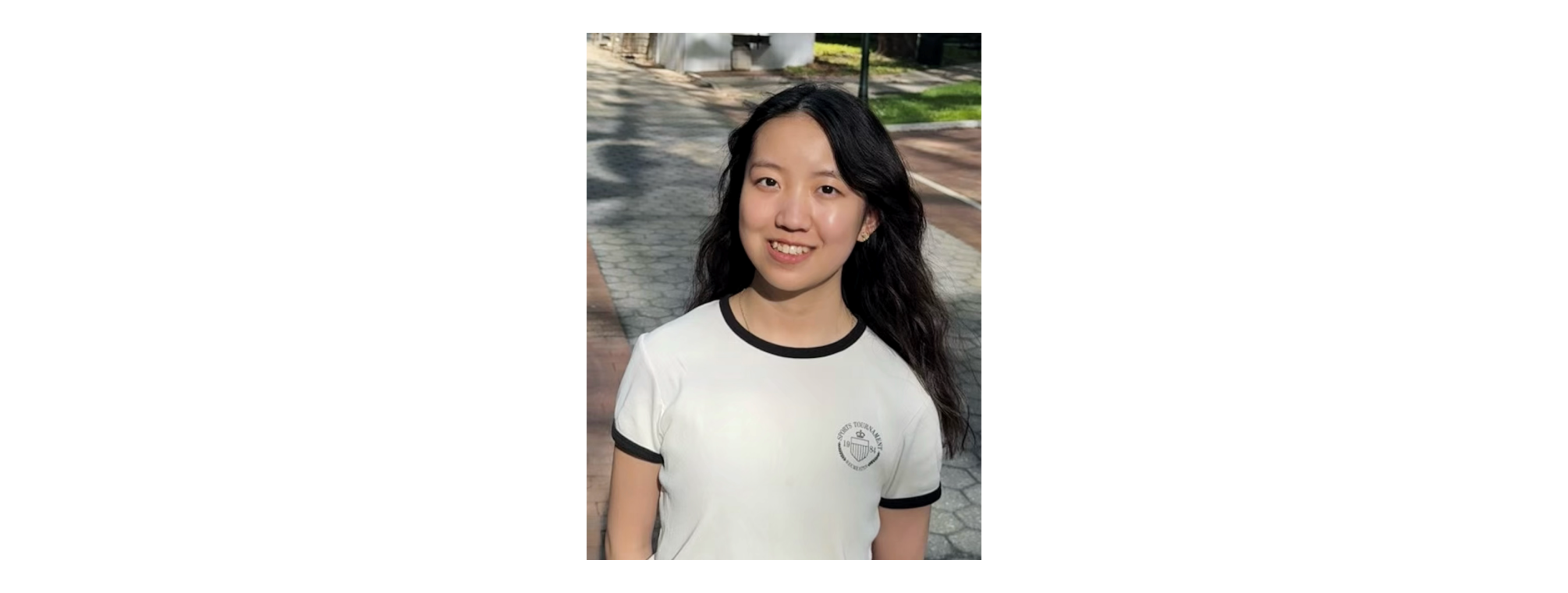
Enya Cao (’28), a Physics and Mechanical Engineering and Applied Mechanics double major, explored how kirigami-inspired geometries can be used to design stretchable mechanical metamaterials for future space antennas and better space communications. She conducted her research with the mentorship of Dr. Igor Bargatin and PhD student Gulzhan Aldan. Enya was supported by the University Scholars program.
This summer, I worked on a project that represents a beautiful blend of engineering and art. I explored how kirigami, the Japanese art of cutting paper, can be used to design materials for the next generation of space antennas.
Space antennas are useful in our everyday lives—from GPS signaling to weather forecasting and disaster relief. However, current technologies frequently use metal plates or metallized rigid structures, which face serious limitations such as the use of complicated mechanical deployment mechanisms that are costly, prone to failure, difficult to stow in a compact form, and constrained by launch vehicle size and weight. Therefore, in our research, we seek to design a reflector material using kirigami cuts—a thin film featuring carefully designed cuts—that offers a simpler, lighter, and more efficient solution.
I researched how different cut patterns changed the way the material stretched. I tested five variations of rotating-square designs, introducing subtle modifications such as additional slits or altered spacing. What seemed like a small change in geometry often led to large shifts in deformation behavior. Using computer simulations, I studied how each design deformed under tension. Then, through physical prototyping, I evaluated whether the patterns were manufacturable, durable, and consistent across samples. Finally, I made a comprehensive evaluation of the five proposed geometries. Going forward, I’m excited to continue this work by improving fabrication reliability and conducting experimental validation. I also hope to explore better simulation techniques (e.g., integrate multi-physics modeling) to iterate designs and validate simulation results.

Above: Enya Cao in the Bargatin Lab making kirigami film samples after a long wait for laser cutting.
I learned that in mechanical metamaterials design, there is often no perfect solution—and sometimes, no closed-form equation that can fully predict behavior. Instead of searching for a single optimal answer, I had to learn how to operate within an iterative, uncertainty-driven design space, where insights emerge gradually through testing and refinement. A single extra cut could double the stretchability, but it could also introduce fragility. A pattern that performed beautifully in simulation could fail under a laser cutter due to random environmental factors. Design choices don’t exist in isolation. We must negotiate multiple considerations in actual engineering design scenarios and develop solutions that show system-level compatibility.
Working in a research group also taught me how knowledge is developed collaboratively and refined over time. My mentors encouraged me to experiment and even fail. I became more comfortable sharing uncertain results and thinking like an engineer: using failure as a way to map the design landscape rather than a setback. Most surprisingly, I learned how much I enjoy the creative side of research. Designing stretchable patterns that are functional and beautiful brought together parts of my personality that I hadn’t previously connected: my interest in engineering, my love of visual design, and my desire to create things that have impact beyond the classroom.
Looking forward, this experience solidified my interest in pursuing graduate study in mechanical engineering and applied physics. I want to continue designing smart structures that solve real-world problems, especially in material science, energy conversion, and fluid mechanics applications. More than the software skills or equations, this research experience taught me how to navigate open-ended engineering problems with a systematic mindset and interdisciplinary approach, which I believe will guide me in whatever research challenges come next.
I am grateful for all the people who supported me throughout the process—my mentors, peers, and UScholars for the opportunity, funding, and the awesome community for me to conduct research as an undergraduate.
Interested in learning more about University Scholars? View other UScholars research experiences on our Student News page!